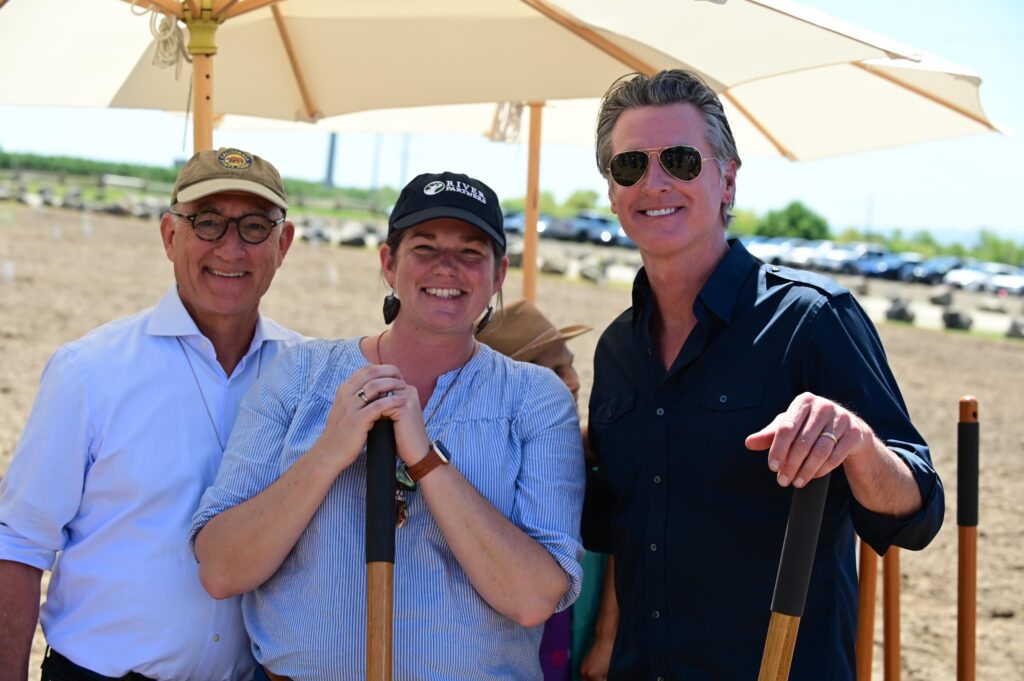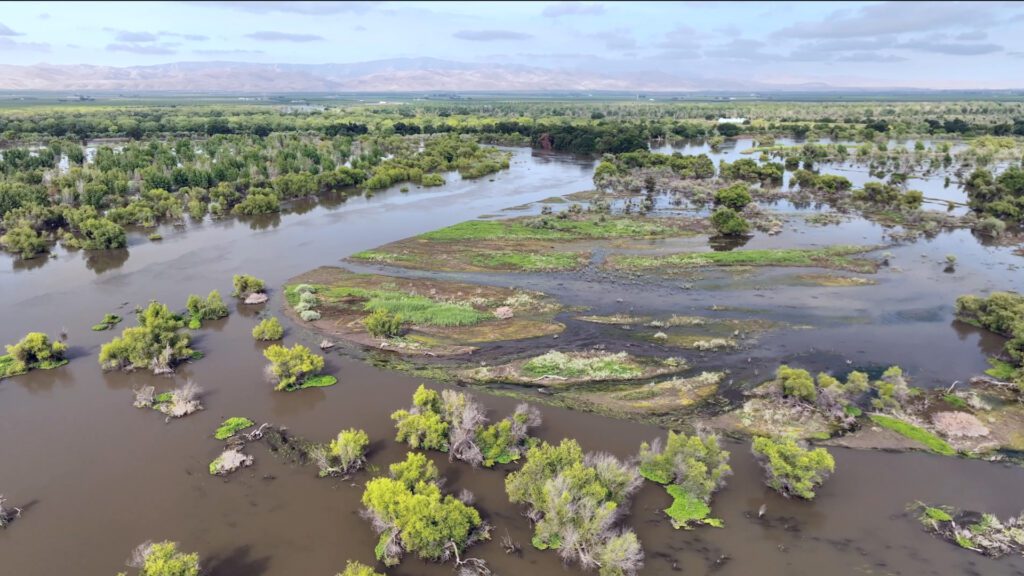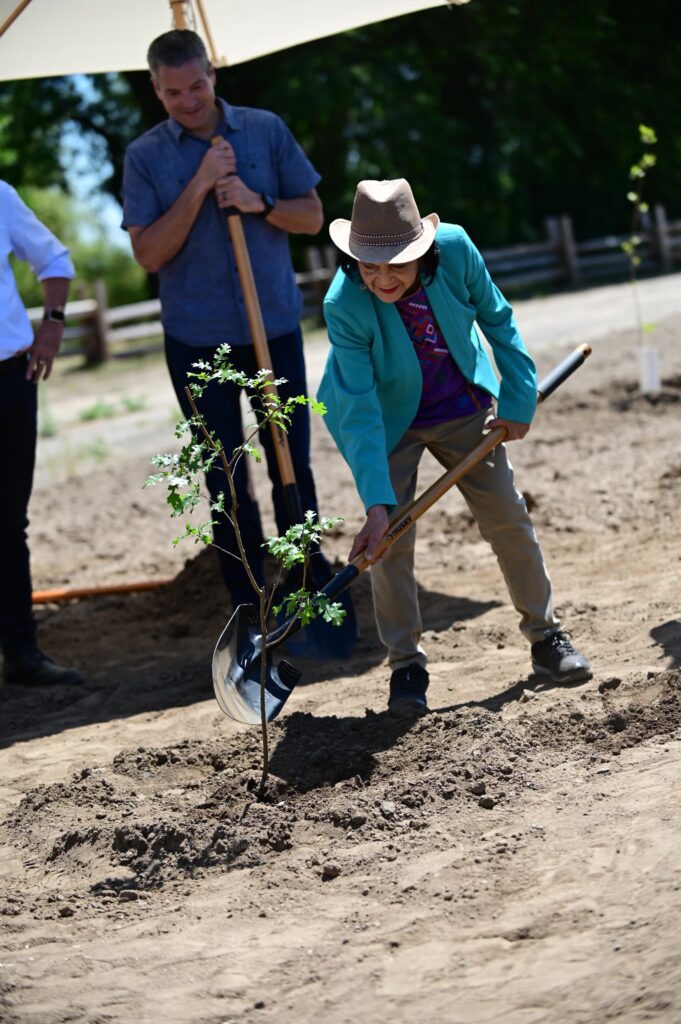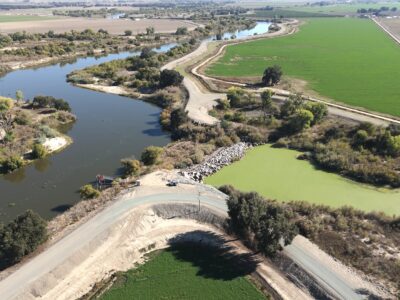Dear readers,
This Earth Day, I had the incredible honor of dedicating River Partners’ 1,600-acre Dos Rios Ranch Preserve as a California’s newest state park alongside an incredible group of change-makers.

For me, Dos Rios State Park represents a turning point for California. It is a testament to the power of vision, dedication to our hearts, and the effectiveness of collection action.
I get the honor of leading River Partners—a nonprofit organization founded here in the Central Valley and dedicated to the ideal of restoration, revitalization, and a more beautiful and functional future through ecosystem restoration.
I’m a proud mom of three, but this park is my first baby. Early on, I used to lead tours of Dos Rios with my friend and amazing partner Patrick Koepele, from the Tuolumne River Trust, and my predecessor John Carlon, who co-founded River Partners with Barney Flynn. Standing on the edge of a corn field at the confluence of the San Joaquin and Tuolumne rivers where the land had been flattened, the river drained, the soil poisoned, and the wildlife extirpated, we’d share the vision for Dos Rios. On those tours, we’d pitch our guests with impassioned pleas for partnership: “Can you see it? One day it will be a diverse forest,” and “Trust in us, I know we can recover endangered species here if we can muster the will to invest.”
We convinced them all—the US Department of Agriculture, US Department of the Interior, US Fish and Wildlife Service, Bureau of Reclamation, Army Corps of Engineering, California Natural Resources Agency, Wildlife Conservation Board, California Conservation Corps, Central Valley Flood Protection Board, Stanislaus County, Reclamation District 2092, and San Joaquin Area Flood Control Agency. As well as the water stewards—San Francisco Public Utilities Commission, Turlock Irrigation District, Modesto Irrigation District, and California Water Board. Even the elected officials—Congressman Harder, former state assemblyman Adam Gray, current state assemblymember Juan Alanis, bipartisan and bicameral California Problem Solvers Caucus, the valley delegation members, the board of supervisors, the Office of Education. And local community leaders—Grayson United Community Center, Stanislaus Audubon Society, the Regional Conservation Districts, California Native Plant Society, SERCal, and West Modesto Businesses United. The Tuolumne Band of Miwok Indianans and our neighbors became partners and supporters. And now, we add California State Parks to that list.
Over time, and through so many invitations realized, so many “ah-ha” moments with partners when we discovered that our seemingly different viewpoints converge here, we realized a vision so much bigger than Patrick’s and my own. Flood safety, groundwater recharge, cultural rejuvenation, and now access for all.
Today, Dos Rios is a monument of collective action by diverse partners driven by the spirit of abundance. It’s easy to treat our resource issues in California with a narrow lens and a scarcity mentality. As this massive economy drives forward, it is easy, especially in under-served valley communities, to imagine that we don’t have enough to go around: enough water, enough money, enough space. But this simply isn’t true.
As this park illustrates with over 1,400 acres of reforested floodplains surrounding this high ground beneath our feet, this place and others like it show us a vibrant picture of an abundant future where restored floodplains support us in the dry times and the wet—our farms, our communities, our families, and our precious biodiversity. Restored floodplains act as sponges for the runoff, both slowing down rapid runoff from ever fiercer atmospheric rivers and storing water and carbon in the forests and soils.

The damage reduction potential of restored floodplains and restored flood infrastructure in the San Joaquin valley tops $1.2 billion per year. And the water storage capacity beneath our feet is dollar for drop the cheapest and fastest storage development we can deliver for our state.
Floodplains deliver this massive economic and water resilience benefit while providing space for our families to enjoy nature, to exercise our bodies and our eyes and our ears, to enjoy the buzzing of those pollinators who keep our farms alive, and the splashing of our iconic salmon in the rivers. In a California that is getting hotter and drier, this place here by the river is one of the most important places for people and wildlife. It keeps us cool and connected.
This morning Governor Newsom announced California’s Climate Commitment and his bold vision for nature-based solutions. His plan centers investment in California’s future with projects like Dos Rios where we create jobs now and for generations to come—good jobs that fill us with pride and a sense of hope, enrich communities with access to natural spaces, revitalize our waterways and enhance and protect our precious biodiversity.
For Earth Day 2024, we gathered to launch this ambitious plan and mark the occasion with tree planting at Dos Rios. The work ahead is huge, and it takes us all pulling in the same direction, but as I tell my friend California Natural Resources Secretary Wade Crowfoot often, we’ve never seen such alignment around water solutions in the valley as we see here on the floodplain.
As we celebrate Dos Rios and a new park, we’re also celebrating a call to action. We’ve got a lot of work to do! It is an honor to do this work with so many amazing folks. We live in a great time, and it’s these partnerships and people that help me carry hope for the progress we can make.
Sincerely,
Julie Rentner
President, River Partners
P.S. I had the honor and the insecurity of introducing our ultimate speaker during the Earth Day event—the amazing rabble-rouser and leader Dolores Huerta. This hero has devoted her life to vision, hope, and action. As a young person, after she realized that she could do more to reduce suffering for valley children than teach them in school, she embarked on a mission in her twenties grabbing Caesar Chavez’ hand to lead a revolution that would protect laborers across this great agricultural state and set a model for worker’s rights that would change the world.

Today, farm workers experience a different life than they did when she was young—with healthier work and home lives, less exploitation, theft and violence, and more opportunity to participate in solutions and raise healthy families. After starting the Stockton chapter of the Community Services Organization in 1955, she advocated for voter’s rights and economic protections for Chicanos. She founded the Agricultural Workers Association and in 1962 she and Caesar Chavez co-founded the National Farm Workers Association that would become the United Farm Workers Union.
She overcame gender and racial bias too, in 1975, successfully organizing and advocating for the groundbreaking California Agricultural Labor Relations Act. She didn’t stop at labor. She worked tirelessly to support the election of women and Latinos to political office and to share her story of hope and collective action around the world. She’s been recognized throughout her life with many awards, including dozens of honorary doctorates, the Eleanor Roosevelt human rights award, and the Presidential Medal of Freedom.
I think everyone will agree with me that Dolores’ inspiration, hope, vision, and work rings in the minds of activists and progressives each and everyday. It is woven into the muscle tissue of our hearts. It is so inspiring that it ran a us presidential campaign with three small powerful words that Dolores is known for, words that to me feel more like a prayer than a slogan: Yes we can. Si se puede.
P.P.S. You can watch the remarks made at Dos Rios’ dedication on Earth Day 2024:








